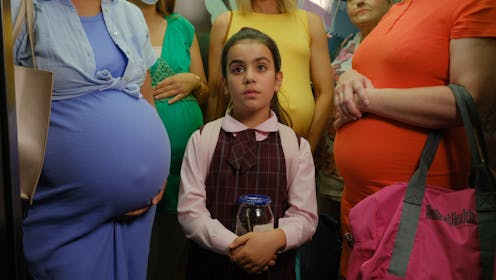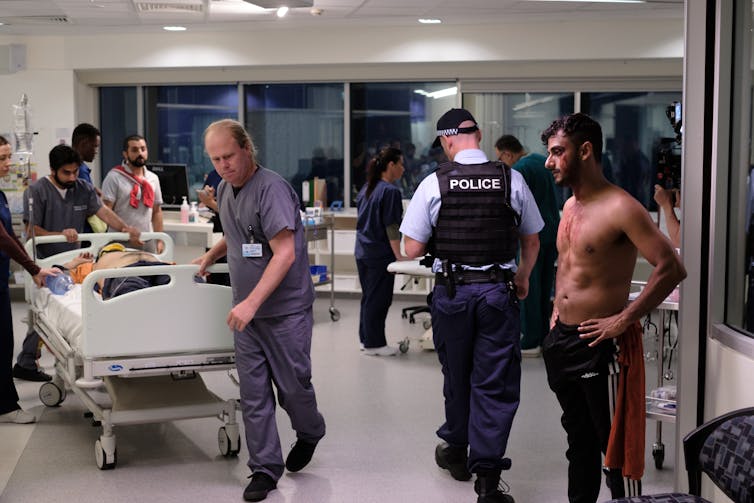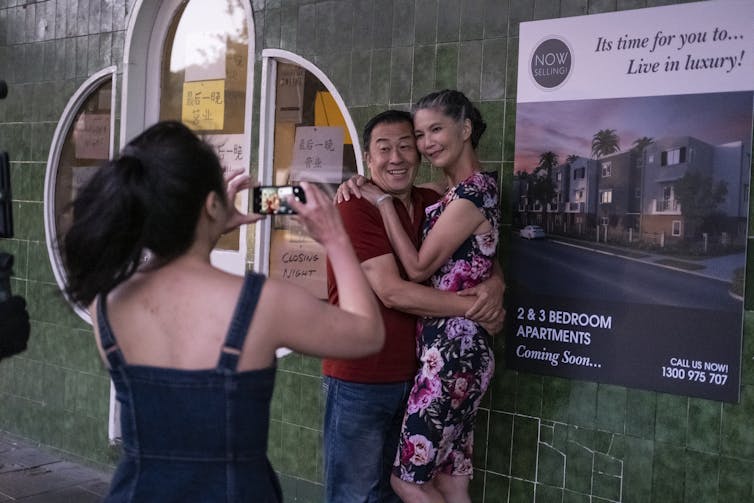
An anthology film usually makes us think of romantic comedies released over Christmas that showcase a global city through interconnected plot lines, or a series of vignette-like character studies by critically-acclaimed directors.
Produced by Western Sydney-based company Co-Curious and Emerald Productions, Here Out West doesn’t follow the traditional anthology film formula, and it doesn’t showcase the glamorous post codes of Sydney, or assemble the works of big name creatives and cast. Nonetheless Here out West, a film that intertwines eight distinct interconnected scenarios set in Western Sydney, is as globally-oriented and locally-inspired as Australian cinema gets.
That is because Western Sydney is one of the the most culturally diverse regions of the nation. The sheer diversity of languages, foods, religious practices and creative traditions of its residents has historically not been enough to change the perception of the region as deprived of cultural capital.
The writing and producing team of Here Out West set out to shift that perception by re-conceptualising what it means to tell contemporary Australian tales to a broad audience while staying true to the suburbs and communities they grew up in.
Consisting of stories from the Vietnamese, Filipino, Indian, Bangladeshi, Lebanese, Kurdish, Chinese, Turkish and Chilean migrants who call Western Sydney home, the film while imperfect in that some stories are stronger than others, is a nuanced examination of race and class.

Exploring Western Sydney through film
Beginning with the story of a newborn kidnapped from a public hospital, we move through many other everyday locations associated with living in the west, including a soccer field, a parking lot, an apartment block, a recently arrived refugee family’s house, rides in buses as well as cars, a Chinese restaurant where the owner insists on wearing traditional garb, and the site of a new housing development with house and land packages on offer.
These settings are as diverse as the people who live, work and move through them. At the same time, the film attempts to bring them together through the themes of kinship – with one’s own biological family and with the community of those many familiar and imagined others who feel a similar sense of pride in being a “Westie”.
One of the most poignant stories from the film is that of intercultural friendship between three young men, written by Arka Das. As one witnesses them chasing each other around run-down apartment blocks and under motorways, every stereotype of racialised masculinity surfaces.
The audience is led to believe that they will shortly be irrationally violent with one another, or that the chase involves illicit substances – but instead it turns out there is a comedy of errors entailing romantic interest, family and forgiveness.
An LGA of concern
Premiering at the Sydney Film Festival in October 2021, the film surprised everyone (including its 8 young writers and 5 female Australian directors) by being picked as the opening night film. After all, Western Sydney was home to a lot of the areas branded COVID “LGAs of concern” by that stage, making it feel even more remote and dangerous to visit by the rest of the city.
The disproportionate impact of the Delta outbreak led a number of writers and journalists with connections to the west to start raising their concerns. They were vocal about how Western Sydney was represented in the media, treated by the NSW government with harsher restrictions during lockdown, and the resilience and civic practices of many of its communities.
In a similar way, the writers and directors of Here out West are writing back to misrepresentations and negative perceptions of Western Sydney with this film. In an interview following its theatrical release, two of the writers, Vonne Patiag and Bina Bhattacharya talked about how there is a burgeoning artistic community in Western Sydney and it is finally getting some recognition through the film. Patiag noted, “the local aspect is key to storytelling by people of colour”.

The new second generation
This narrative of taking things in their own hands, with a little help from the right mentors and funding agencies is not an isolated incident.
In Australia and in comparable immigrant countries, there is a growing population of young, second-generation migrants who have grown up with YouTube and Netflix. For these young people, watching year after year of national commercial television where they don’t see themselves reflected is no longer enough.
In the era of globally-accessible digital media, many creative practitioners from these communities are bypassing mainstream executives and institutions to find ways to create and showcase their own content, mostly on their own terms. Referred to as “the new second generation” in the US, they are claiming their agency and right to be represented as legitimate national subjects in TV and film.
They are resorting to self-representation and advocacy after having been let down by practices and mindsets that persist in creative arts and media industries. These include typecasting actors from ethnic backgrounds in roles that stereotype their communities, or only funding a certain number of “diverse” projects per cycle to tick a box.
Stories that centre marginalised subjects, however, still need to reach wide audiences to shift perceptions and policies. What remains to be seen is whether Here out West will also be part of a broader tide of change that includes these communities in future decision-making – in the arts and beyond it – instead of merely consulting with them when convenient.
Sukhmani Khorana received funding from the Australian Research Council Linkage Grant, 'Migration, Cultural Diversity and Television: Reflecting Modern Australia' (2016-2020). Sukhmani Khorana has also worked on a community engagement project (2018-2019) with CuriousWorks, which is a sister company of Co-Curious.
This article was originally published on The Conversation. Read the original article.






